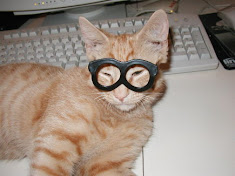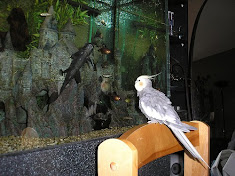 |
| Bearded Dragon Getting Some Greens by fro_Ost |
You'll also want to make sure you provide a variety of vegetables. These can be fresh or frozen, either is very nutritious. There are many options to choose from such as beans, peas, pumpkin, zucchini and much more. So this should be easy to come by and may already be found in your fridge. Also feed your beardie flowers such as daisies, dandelions or hibiscus if possible and choose some fruits like berries, squash and apples as a treat.
Protein is also a very important part of a bearded dragon's diet. Generally this comes in the form of crickets, roaches or mealworms. Crickets are usually the insect of choice for many beardie owners. However roaches and mealworms are not uncommon. Crickets are also the healthiest option as mealworms tend to be very high in fat. As a guideline most people suggest that you feed your beardie as much as he or she will eat in 15 minutes. In most cases this method works and I'd suggest you give it a go. However just be aware of how much your dragon is eating and be careful to observe any weight gain. Some beardies have huge appetites whilst others don't, so you might need to begin regulating his or her protein intake. Another important point to mention is insect gut loading. This is for when you choose to breed your insects yourself. You want to feed them highly nutritious food for at least a couple of days before feeding them to your dragon. This is important because they pass on all the goodness when ingested.
Finally you should always dust your bearded dragons meal with a calcium supplement at least every second day. This provides them with the nutrients they need to keep them active and healthy. Some people provide calcium in other ways such as feeding foods which are high in calcium regularly or by using a calcium sand substrate. The calcium sand is not recommended though as it only provides the calcium when ingested and this is something you want to avoid. It is ok to feed foods high in calcium as this is a more natural way of doing it. However most choose to dust their food with calcium as they can monitor exactly how much calcium they are receiving.
Author Resource: Written by Lauren Powell
To learn more about bearded dragon nutrition bearded dragon nutrition, try Bearded Dragon Answers, a free site that provides information on how to care for and keep healthy bearded dragons.



1 comments:
Bearded dragons are great pet lizards, both for lizard beginners as well as seasoned reptile enthusiasts. This is due to their gentle nature and minimal maintenance requirements, which has made them popular family pets. In most cases, they are healthy, hardy animals, which normally have a lifespan of ten years or more.
January 16, 2013 at 7:16 AMPost a Comment